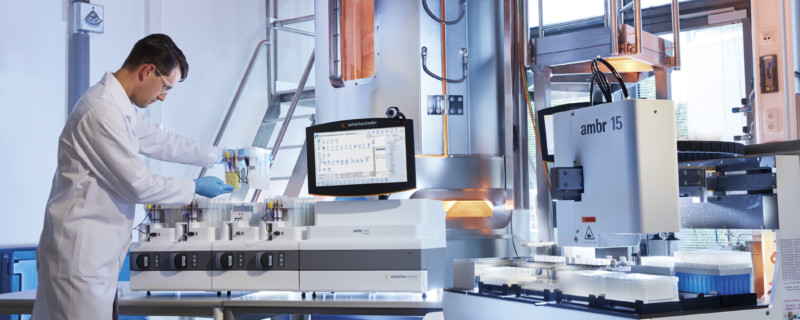
Fast tracking a QbD Approach
QbD starts with an understanding of the quality target product profile. This allows potential critical quality attributes (CQAs) to be established and a risk assessment performed that links material attributes and process parameters to CQAs. By understanding the impact of process parameters on CQAs a design space can be developed in which CQAs will be met. Bioprocess engineers must then implement a suitable control strategy that ensure the process operates with the design space. Continuous improvement activities can be performed throughout the product lifecycle and enhance product quality still further.
Establishing a design space can require a relatively large number of experiments. These can be expedited using high throughput process development tools. Importantly, scale-down models must be predictive of large-scale performance.
Studies performed by LONZA have shown the importance of matching bioreactor geometries across scales. Process engineers at the company found that observed KLa values matched predicted values from models only when bioreactors had similar geometries². Bioreactors with similar geometries have mass transfer characteristics that are more comparable to one another.
To facilitate QbD for upstream processing, Sartorius Stedim Biotech (SSB) has ensured the geometric similarity of its bioreactor range from the ambr® 250 systems through to the BIOSTAT® STR 2000 single-use bioreactor. Bioreactors across the entire range have been fully characterized and the data is available for clients.
SSB has developed a scale conversion tool to translate scale-dependent parameters across its range of bioreactors. This is allowing firms to translate design spaces developed at the 250 mL-scale up to the 2000 L-scale readily. Merck have shown that performing DOE experiments in the ambr® system offers real benefits over performing the same experiments in 1.5L bioreactors including the ability to eliminate some blocking experiments and add temperature as an additional variable¹.
The biopharmaceutical industry is putting increasing focus on process analytical technologies that provide real-time data on the performance of systems and enable enhanced control with design spaces. This is especially important during the development of continuous upstream processes where single-use glucose and biomass sensors are proving invaluable for delivering steady-state operations.
Given the amount of data that bioprocessing systems generate, biomanufacturers need tools to manage the data and knowledge generated both during process characterization activities and during routine production. SSB’s MFCS SCADA system allows process recipes to be translated readily between scales and multivariate data analysis (MVDA) to be performed for visualization and diagnostic purposes. The integrated MVDA module is allowing operations managers to easily compare batches performed at the same and different scales.
Companies such as Merck are taking advantage of real-time multivariate process monitoring and have reported that it has saved 3 batches in 18 months but informed actions in half of all bioreactor runs. They found that the method detected deviations from process parameters immediately and allowed many problems to be resolved before the filed limits are approached.
To help firms realize the full potential of QbD in upstream processing, SSB has developed a platform of upstream processing technologies including the latest bioreactor technology from the micro-scale through to production scale, sensors and software toolbox. To find out more contact me at mario.becker@sartorius.com

Footnotes
-
1. Kistler, Pollard, Sin Ng, Streefland (2016) Genetic Engineering & Biotechnology News (Vol. 36, No. 7) Apr 2016
-
2. Scale-up in the single use age: Does geometry matter?” at the Sartorius Upstream and Downstream Technology Forum in June 2016